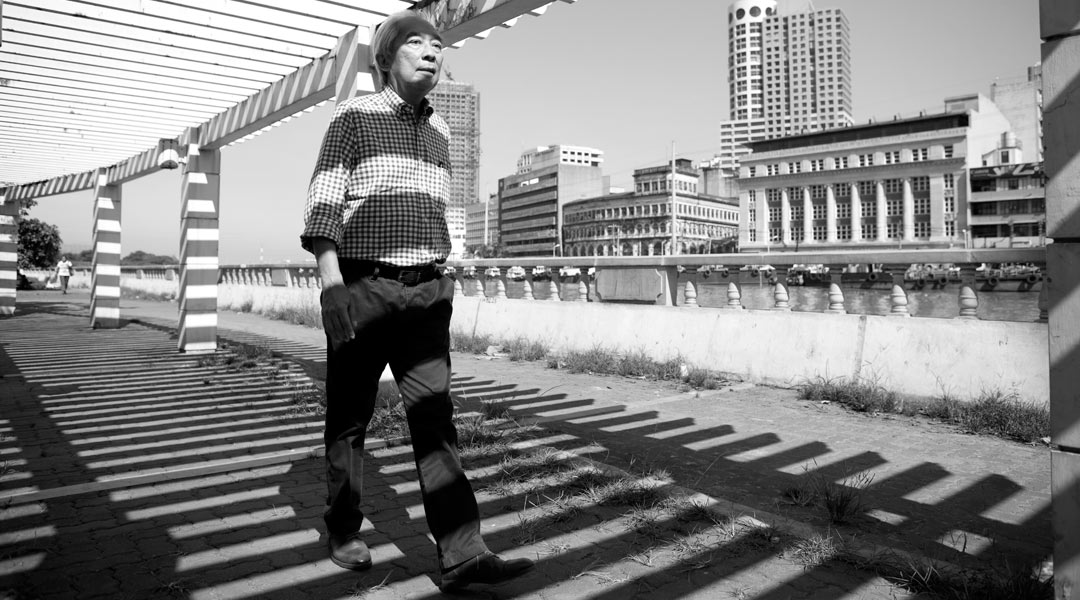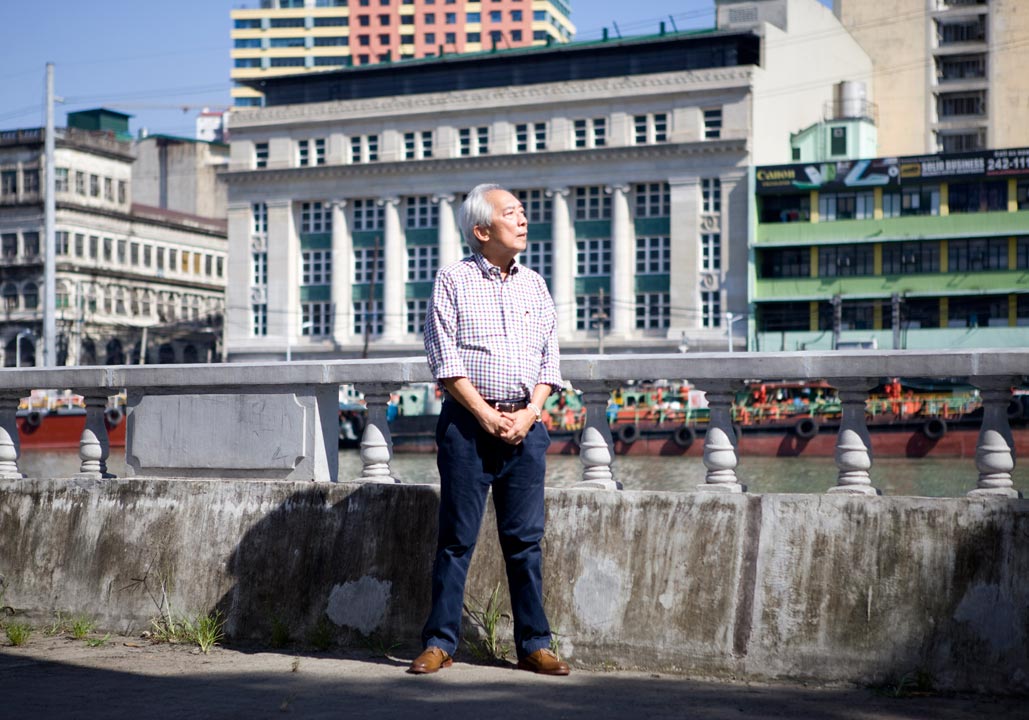
Remembering Augusto Villalon: gentleman hippie and heritage radical
I never met Toti, but feel like I have. That probably testifies to the power of his work, which resonates beyond his immediate circle of colleagues and friends, and even beyond his lifetime. The BluPrint archive, which I deal with daily, charts his challenges and achievements. I’ve read the adaptive reuse plans and seen the site photos, the fruits of his commitment to protect our built heritage.
Augusto “Toti” Villalon is a legend in my book and in so many others’. It is only comforting to think that a man who rallied to keep valuable buildings standing, seeing value where others did not, is finally in a place where streets and walls never crumble.
As I write, I recall his name emphasized with admiration in three instances. During a recent reunion in university, I chatted with my former history professor about the dearth of local architecture historians and he was quick to list some names down for me. Toti’s was one of them.
On a breezy February morning amidst the chiseling of adobe in the Paco Park restoration, Escuela Taller project lead Jeffrey Cobilla and I had an exchange of heartaches on the state of our heritage. He counted the handful of architects specializing in conservation in our country. And when it came to Toti’s name, there was a lift in his narration, a spark of hope.
Lastly, my main cord to who Augusto Villalon was and his impact on our architecture is Dominic Galicia, whose untiring cries for the saving of our architecture online and off carry on Toti’s mission. Here we republish Galicia’s 2013 tribute to Villalon, which originally appeared in our Design Heroes and Mentors Issue.

Augusto Villalon is very much a gentleman of the old school, but in agenda he is a radical. For decades, through his work, his writing and his speeches, he has been shaking society out of its stupor, and guiding it away from mindless demolition to the brighter, more inspired plane of preservation and adaptive reuse. In my opinion, his work in heritage conservation and his role in its genesis in our country place him in that roster of Filipino architects who have contributed greatly to the nation.
Villalon has a resume that is more impressive than that of most living Filipino architects, with accomplishments that go beyond the work of building or conserving structures to the work of fortifying our nation’s cultural memory.
When I first returned to the country in the late 1990s, Villalon was one of less than a handful of voices—and the only architectural one—clamoring for heritage conservation. Today, the advocacy has spread throughout the country, and is, in various guises, part of the national agenda. We still have situations in which an architectural masterpiece such as the PhilamLife Building on UN Avenue is about to be demolished. But Villalon is no longer alone in trying to save it. There is a movement now.
It is illuminating to look at some of the influences that gird the backdrop of this influential architect. In particular, it is worthwhile to consider his architecture education. The leitmotif of an architect’s professional life often springs from his experience in architecture school.
He belongs to the tradition of the Filipino architect who studies abroad, and like a bee brings back with him ideas that help to pollinate the local architecture world. What often occurs is an actual importation of the prevailing style of a given time. Look at Escolta, for example, and the Art Deco that Andres Luna de San Pedro had just brought back with him from Europe in the first quarter of the last century. In my opinion, Villalon brought back with him an idea that may arguably be more valuable than a particular style.
What Villalon brought back was not so much a way of building but a way of thinking rooted in a respect for context and the history of a place.
READ MORE: Riverside Palace Renewed: The Juan Luna Building
When Villalon started at Yale in 1966, it was a time of intellectual and cultural ferment. Hippie was not just a style, but a way of thinking that plumbed depths and questioned everything.
The dean of the Yale School of Architecture in the late 1960s was the charismatic and phenomenally open-minded architect Charles Moore. Vincent Scully was also giving his legendary Art History lectures, enrapturing students that packed the auditorium. Robert Venturi and Denise Scott Brown were bringing a group of graduate students from the class ahead of Villalon’s to document the gambling capital of Las Vegas, treating its braggadocio as if it were Pompeii or Rome in the seminal book “Learning from Las Vegas”, a cannon aimed at what had become canonical and draconian, the International Style.
If one could distill the lessons from Yale into one or two sentences, perhaps they would be these: When you build, honor the context, learn from it; dialogue with it. This is how civilizations grow and how cities flourish. Villalon has been untiring—through his work and his writing—in sharing this truth.
Augusto Villalon, Principal Architect and Cultural Heritage Planner of Villalon Architects was president of Genvi Development Corporation (Cebu); a member of the ICOMOS Advisory Committee (Paris); and Trustee of the National Museum of the Philippines. He was also head of the oldest NGO in the Philippines, Gota de Leche, (founded in 1906) which feeds malnourished impoverished children of Manila City center.
He considered the following his most significant work: implementing a Kenzo Tange master plan in Nepal; working on the Buddhist pilgrimage trail in Northern India and Nepal; documenting traditional agricultural and cultural practices in the rice terraces of the Philippine Cordilleras and Bali; having been a bureau member of the UNESCO World Heritage Committee (Paris) during its early, formative years; and designing homes for clients that fit their lifestyle as comfortably as a pair of well-worn jeans.
His awards include the Chevalier de l’Ordre des Arts et des Lettres from the Ministry of Culture of France; Diwa ng Lahi from the City of Manila, Exemplary Alumnus Award from the University of Notre Dame, La Sallian Achievement Award, and the UNESCO Asia-Pacific Cultural Heritage Award (awarded twice).
Villalon was born May 31, 1945, in Manila, and died on May 5, 2018.
His remains are at Capilla de la Virgen in Santuario de San Antonio, Forbes Park, until 9 May 2018 (Wednesday). Daily viewing from 9:30 a.m. to 11:00 p.m., with daily mass at 7:00 p.m. Interment in crypt is on Thursday following 10:00 a.m. mass in the main church.
Tonight, Monday, after the 7:00 mass, there will be a tribute to Toti coming from the heritage conservation community.


